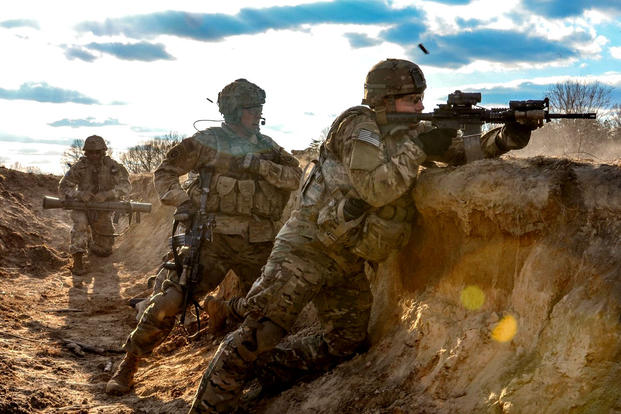Defense Secretary Jim Mattis' point man on the Pentagon's Close Combat Lethality Task Force said Tuesday that the effort to boost combat power at the squad level suffers from a lack of research and development funding.
"I would tell you, in my opinion, it's not a good news story," retired Marine Lt. Col. Joseph L'Etoile, task force director, said of the state of funding for research and science and technology (S&T) needed to improve lethality.
In terms of Defense Department spending, "close-combat initiatives received about 0.8 percent of the department's total R&D,and S&T," he said.
"That's a curve we'd like to bend," L'Etoile said in a panel discussion on building a "Ready and Lethal" force at the Association of the U.S. Army's annual meeting and exposition.
Lt. Gen. Laura Richardson, deputy commander of the Army's new Forces Command, said that the service's "every effort" was focused on lethality in line with Mattis' directive under the National Defense Strategy to be prepared for a potential war against a "near-peer" adversary such as Russia or China.
The Army must undergo a fundamental mindset shift in the effort to achieve "Global Dynamic Overmatch," she said.
To that end, she said, the Army is revamping training to emphasize short-notice exercises scheduled "at the most inopportune time" with shifting requirements, "all with the purpose of stressing the system" to gauge readiness.
She cited a recent exercise involving the 10th Mountain Division, based at Fort Drum in upstate New York. The division, which is accustomed to moving by rail to Combat Training Centers, was told to move by sea through the Port of Philadelphia, Richardson said.
"I'll tell you our training strategy works," said Lt. Gen. Paul E. Funk II, commander of the Army's III Corps and Fort Hood, Texas.
He added that he had watched the success of operational effects in his former job as commander of Combined Joint Task Force-Operation Inherent Resolve in Iraq and Syria.
However, Funk has concerns about how improved lethality on the small-unit level would translate coherently into larger formations.
"I worry about above-brigade formations," he said.
In setting up the lethality task force last February, Mattis said that close-combat ground formations traditionally suffer 90 percent of the casualties, but "advances in training methods and equipment have not kept pace with changes in available technology" for small units.
In a paper for AUSA's Institute of Land Warfare, retired Col. Daniel S. Roper cited Mattis' definition of close-combat overmatch as "the ability of a squad-sized unit to impose its will on a similar-sized opponent under all conditions and operational environments."
In relation to the major power threats posed by near-peer states, "the fundamental problem to overcome is an erosion in close-combat capability," Roper added.
As the result of a review conducted in 2017, the DoD authorized $815 million to improve the lethality of 4,005 Army small units and $485 million for 685 Marine small units for fiscal 2019, he said.
Much of the money will be spent on new equipment, such as the next-generation rifle and new machine guns, but funding for 2020 and beyond is questionable, Roper said, adding that investments in planned Phases 2 and 3 on improved lethality "has yet to be determined but likely will be significantly more than the initial allocation."
-- Richard Sisk can be reached at Richard.Sisk@Military.com.










